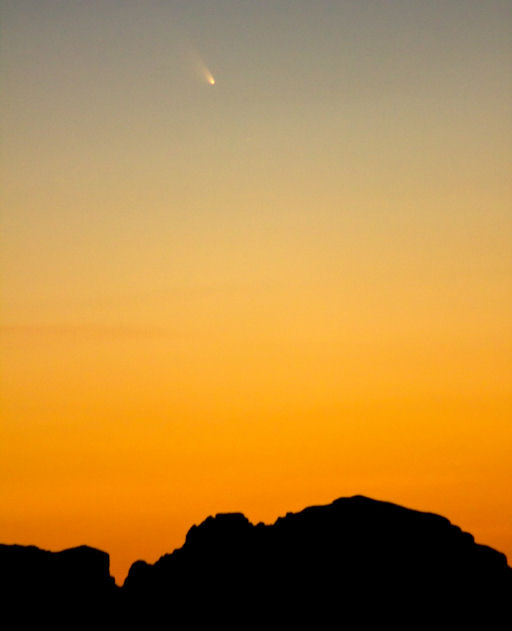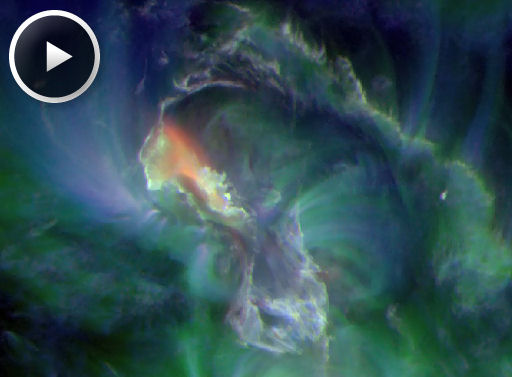Metallic photos of the sun by renowned photographer Greg Piepol bring together the best of art and science. Buy one or a whole set. They make a stellar gift. | | |
QUIET SUN: Solar activity is low. NOAA forecasters estimate a 15% chance of M-class flares and a scant 1% chance of X-class flares during the next 24 hours. Solar flare alerts: text, voice.
PHOTO-OP TONIGHT: Tonight, March 12th, Comet Pan-STARRS (C/2011 L4) is getting together with the slender crescent Moon for a beautiful sunset conjunction. The only question is, will you be able to see it? Naked-eye observers are having trouble finding the comet in bright twilight. The good news is, it only takes a couple of seconds of exposure time to produce a picture like this:

"This is a 2-second exposure I made using my Canon 2Ti digital camera set at ISO 800," says Russell Vallelunga of Phoenix, Arizona. "Comet Pan-STARRS was even more impressive tonight (March 11th) than last night, being much higher in the sky."
Add the crescent Moon to this scene and presto! -- a fabulous photo-op. Look low and west after sunset for the Moon and Pan-STARRS only a few degrees apart. Let the Moon guide you to the comet; it is visible to the naked eye if you know where to look. Binoculars are helpful, too. Sky maps: March 12, March 13.
More: NASA video, 3D orbit, ephemeris, light curves.
Realtime Comet Photo Gallery
MAGNETIC ERUPTION ON MARCH 12th: A magnetic filament in the sun's northern hemisphere erupted today, March 12th, around 1107 UT. Extreme ultraviolet telescopes onboard NASA's Solar Dynamics Observatory recorded the action:

The source of the explosion was active region AR1690 on the sun's central meridian. Although AR1690 is almost directly facing our planet, debris from the blast might miss Earth. A CME emerging from the blast site appears to be heading mostly north of the sun-Earth line. Stay tuned for updates about a possible glancing blow in 2-to-3 days. Aurora alerts: text, voice.
Realtime Space Weather Photo Gallery
Realtime Aurora Photo Gallery
Realtime Noctilucent Cloud Photo Gallery
[previous years: 2003, 2004, 2005, 2006, 2007, 2008, 2009, 2011]
Potentially Hazardous Asteroids (
PHAs) are space rocks larger than approximately 100m that can come closer to Earth than 0.05 AU. None of the known PHAs is on a collision course with our planet, although astronomers are finding
new ones all the time.
On March 12, 2013 there were potentially hazardous asteroids.
Notes: LD means "Lunar Distance." 1 LD = 384,401 km, the distance between Earth and the Moon. 1 LD also equals 0.00256 AU. MAG is the visual magnitude of the asteroid on the date of closest approach. | | The official U.S. government space weather bureau |
| | The first place to look for information about sundogs, pillars, rainbows and related phenomena. |
| | Researchers call it a "Hubble for the sun." SDO is the most advanced solar observatory ever. |
| | 3D views of the sun from NASA's Solar and Terrestrial Relations Observatory |
| | Realtime and archival images of the Sun from SOHO. |
| | from the NOAA Space Environment Center |
| | the underlying science of space weather |

